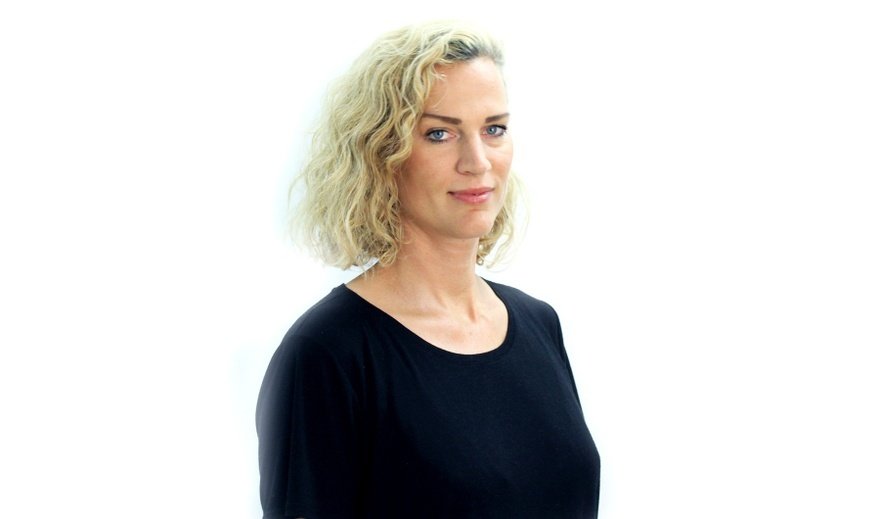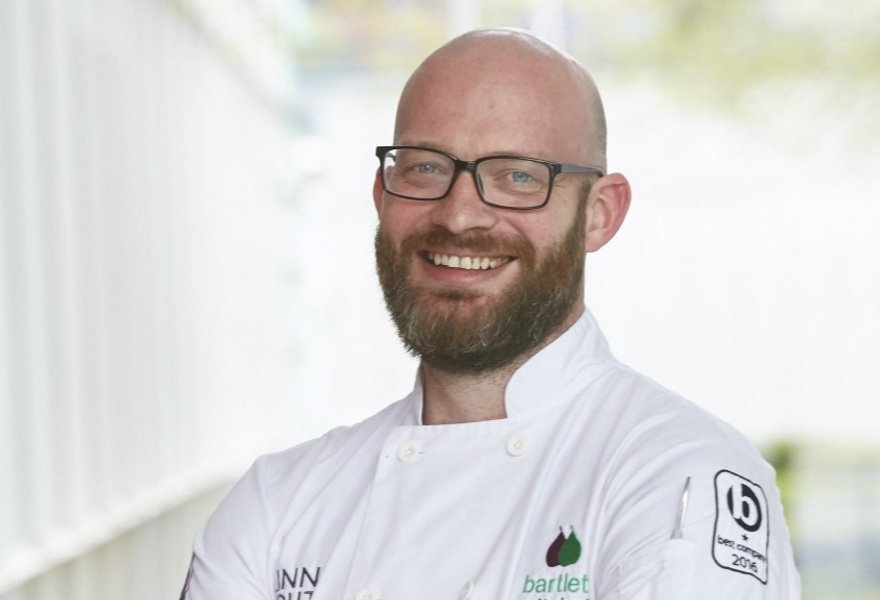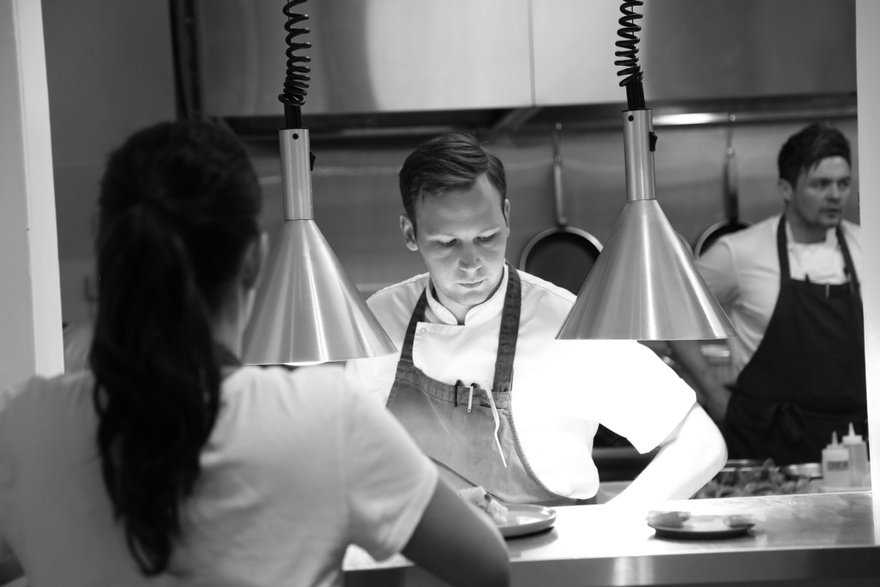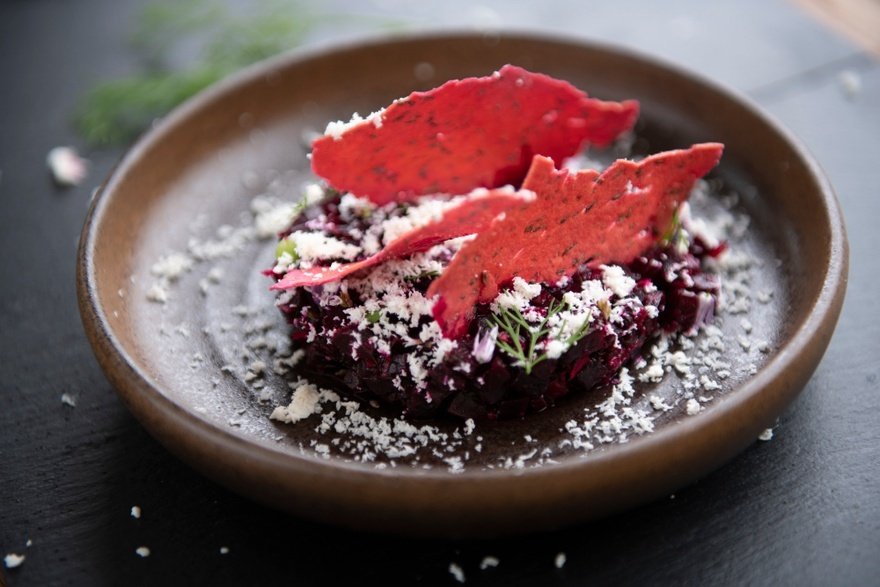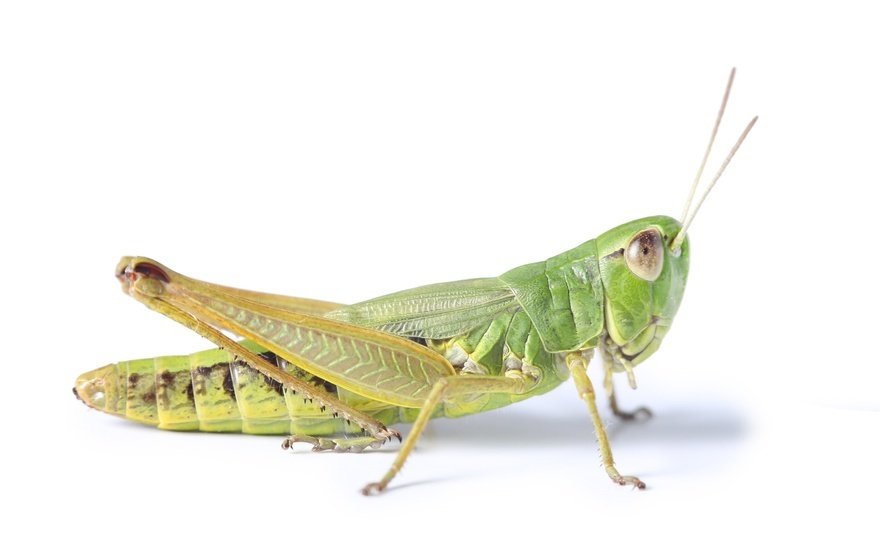Meals that matter: how to make your menu sustainable
Chefs are feeling overwhelming pressure to consider sustainability in their menus, but how should they go about it? Andy Lynes reports
In 2019, the issue of sustainability has become unavoidable, so it's no surprise that research carried out by restaurant booking platform OpenTable and The Caterer found that 85% of more than 200 operators said their guests think sustainability is either very or somewhat important.
The commercial and social imperatives on chefs to design sustainable menus that address those concerns have never been more pressing. That may seem a daunting prospect if you've never tackled it before, but the good news is that there are plenty of resources to help you on your way.
"The key questions to consider are, what is sustainability and what does it mean to the business you work for?" asks sustainability consultant Ylva Johannesson of the Sustainable Restaurant Association, which offers a raft of initiatives and assistance to members wanting to become more sustainable.
"A chef might feel that food waste is the main topic, a diner might feel that greenhouse gas reduction and carbon emissions are the biggest issue and an owner might feel that healthy eating is the most important aspect. A starting point is finding out what the business is and who you are working for – if it's not your own restaurant – so you get the right angle."
Local and seasonal
Pete Redman, chef-director at Bartlett Mitchell, which has been named the Sustainable Restaurant Association's Sustainable Caterer of the Year three years in succession, says one of the easiest things to do is to buy local and seasonal: "I always recommend speaking to suppliers and challenging them about the story behind the produce they are offering.
Take avocados – a very popular plant-based brunch option, but are they responsible for deforestation and water shortages? We need to keep asking ourselves these questions."
For Scott Smith, chef-proprietor of Fhior restaurant in Edinburgh, reducing customer choice is key when designing a sustainable menu. He says, "Consumers have an ‘expected luxury' that they'll have so many choices, but to be sustainable that can't be the case. You can't have 20 or 30 options on the menu because that will create waste. To manage that amount of ingredients is a very difficult challenge."
At dinner, Smith offers four- or seven-course tasting menus only, composed of lesser-used produce or what is abundant at the time. "Have a look around you and see what other people are doing. If they're always using the saddle or the rump, then use another cut.
They're only getting a small part of the carcass across on the menu, so it's about doing something different to use what's not popular on the market as a way of keeping sustainable. If you're able to buy an animal whole, I'd recommend doing that, because it will be of financial benefit to the business as well."
Smith says that the meat and fish on the menu is served more as a supplement to the organic vegetables he sources from Phantassie, a 30-minute drive from Edinburgh.
"We're more vegetable-focused, which is a bit of a trend in restaurants in general. The meat industry is stretched. The amount has become a bit obscene."
That trend will be reflected in Kindling, a new Brighton restaurant owned by Ramin and Jane Mostowfi, formerly of Brighton's renowned vegetarian restaurant Food for Friends. The kitchen will be centred around an open wood fire and the menu, created by chefs Holly Taylor and Toby Geneen, will be largely plant-based.
"The cost implication of running a 75% plant-based menu is, of course, a positive one, but the main reason we're doing it is because we think it's the right thing to do and it's where food is headed," says Geneen.
Taylor and Geneen are taking an almost collaborative approach when it comes to their suppliers, working with rather than demanding from them. "These little guys who are doing things really ethically might have half a cow for you one week and then nothing for quite a while. You have to have an open mind and be flexible with your menu, but also with deliveries, which may only come once a week, as opposed to when you're working with bbig supplier, who delivers six days a week. It wouldn't work if you change your menu only once every three months."
For Taylor and Geneen, minimising what goes in the bin is as crucial as deciding what goes on the plate. "We make the best use of everything and that's kind of exciting – fermenting the peelings of something or making a jam out of something else just to see what happens. The limitations make us more creative," says Taylor.
However, as Geneen admits, experimentation does come with its dangers. "We accidentally made some acetone when we tried to ferment some quince, so we've made our own natural cleaning product that we're using to clean labels off of things. We also fermented some broccoli in a very interesting way. Essentially, we made vegan ‘fish' sauce, which wasn't what we were aiming to do. From a certain point of view it's absolutely disgusting, but used for the right thing, it could be incredibly interesting."
A manifesto for menus
Biodiversity, the variety of plant and animal life in the world, has become an increasingly important buzzword in relation to sustainability.
It's central to the Chefs' Manifesto action plan, which is available to download online and a useful tool when designing a sustainable menu. It recommends "using different varieties of plants, grains and proteins and to champion ‘wild' variants and avoid monoculture".
Eco-chef Justin Horne of Sativa restaurant in London and contributor to the manifesto recommends seeking out suppliers like Hodmedod's for ingredients such as English smoked quinoa. "The supply is within 58 miles of London as opposed to 7,000 miles for quinoa from Chile or Bolivia, and the quality is incredible," he says.
Although it is tempting to see designing a sustainable menu as a commercial response to current customer demand that may fade, Smith advices against taking a short-term view. He admits that he doesn't even really promote the sustainable aspects of his menu, even though they are central to the restaurant's ethos.
"The danger for sustainability is that it becomes a fad or a fashion, which is the complete opposite of the meaning of the word in the first place," says Smith. "It's something that sustains itself for a very long time and it's something that I believe we should just be doing. Normalising it is the best way of allowing it to grow."
What is ethical meat?
While there appears to be no universally agreed definition of what ‘ethical meat' actually is, there are guidelines laid down by various groups and associations that can assist in deciding what meat to buy when designing a sustainable menu.
Animal welfare is one important aspect of ethically produced meat and therefore organic is a good way to go. The Soil Association says that its specific organic standards for cows, pigs, poultry and sheep, "cover living conditions, food quality, the use of antibiotics, as well as transport and slaughter", which means that "animals raised organically enjoy the very highest welfare standards of farmed animals".
Compassion in World
Farming, which has been campaigning to end all factory farming "free-range chicken and poultry, free-range pork (or make sure it's outdoor bred and reared) and grass-fed beef and lamb".
However, we may have to expand our idea of what is acceptable to eat in order to remain ethical and sustainable. In Rotterdam, sustainable food company Krekerij has plans to farm crickets and grasshoppers on land traditionally used for cattle and the company already markets a burger made from imported insects.
Insects use 95% less water, 85% less food and 90% less land than traditional farm animals, making them arguably the most sustainable food on the planet.
Farmed versus fresh
Simply identifying a sustainable variety of fish may not be going far enough. According to the Marine Conservation Society (MSC): "The sustainability of fish can vary significantly depending on how and where it has been caught or farmed."
For example, halibut caught at sea in the Atlantic is rated 5 on the MSC's 1-5 sustainability rating system, meaning it's to be avoided as an endangered species that has been heavily overfished.
Conversely, halibut farmed in closed, shore-based production systems, such as those used in Scotland by producers such as Gigha, is rated 1 for ‘best choice'. The other species currently rated 1 or 2 (for ‘mostly sustainable, good choice') by the MSC include anchovy from the Bay of Biscay, Arctic char, sea bass and gilthead bream farmed in Europe using a recirculating system, Icelandic cod and salmon.
It should be noted that ratings should be checked from time to time as they will vary as stocks are either diminished by over-fishing or replenished by good fisheries management.
What to do with trimmings and offcuts
At Spring restaurant in Somerset House in London, chef Skye Gyngell has a raft of initiatives to put what would otherwise be waste to good use:
- Citrus peel is candied or used with other fruit peelings and trimmings to make cordials.
- Fruit gluts are made into jams, and herb stalks are used to create a herb jam that's served with meat and fish.
- Excess vegetables are pickled and fermented.
- Vegetable trimmings become coleslaw or fill sourdough dumplings made from the restaurant's leftover bread
- Leftover bread is also re-milled into flour and used to make cakes.
- Buttermilk, a byproduct of making butter, is used to make salad dressings.
- Leftover milk for coffee is collected and transformed into yogurt and labneh.
Spring's pre-theatre ‘scratch' menu (£25 for three courses) incorporates many of the above as well as organic beetroot tops and potato skins turned into soup, and trimmings from housemade pasta baked with leftover cheese.
Continue reading
You need to be a premium member to view this. Subscribe from just 99p per week.
Already subscribed? Log In


